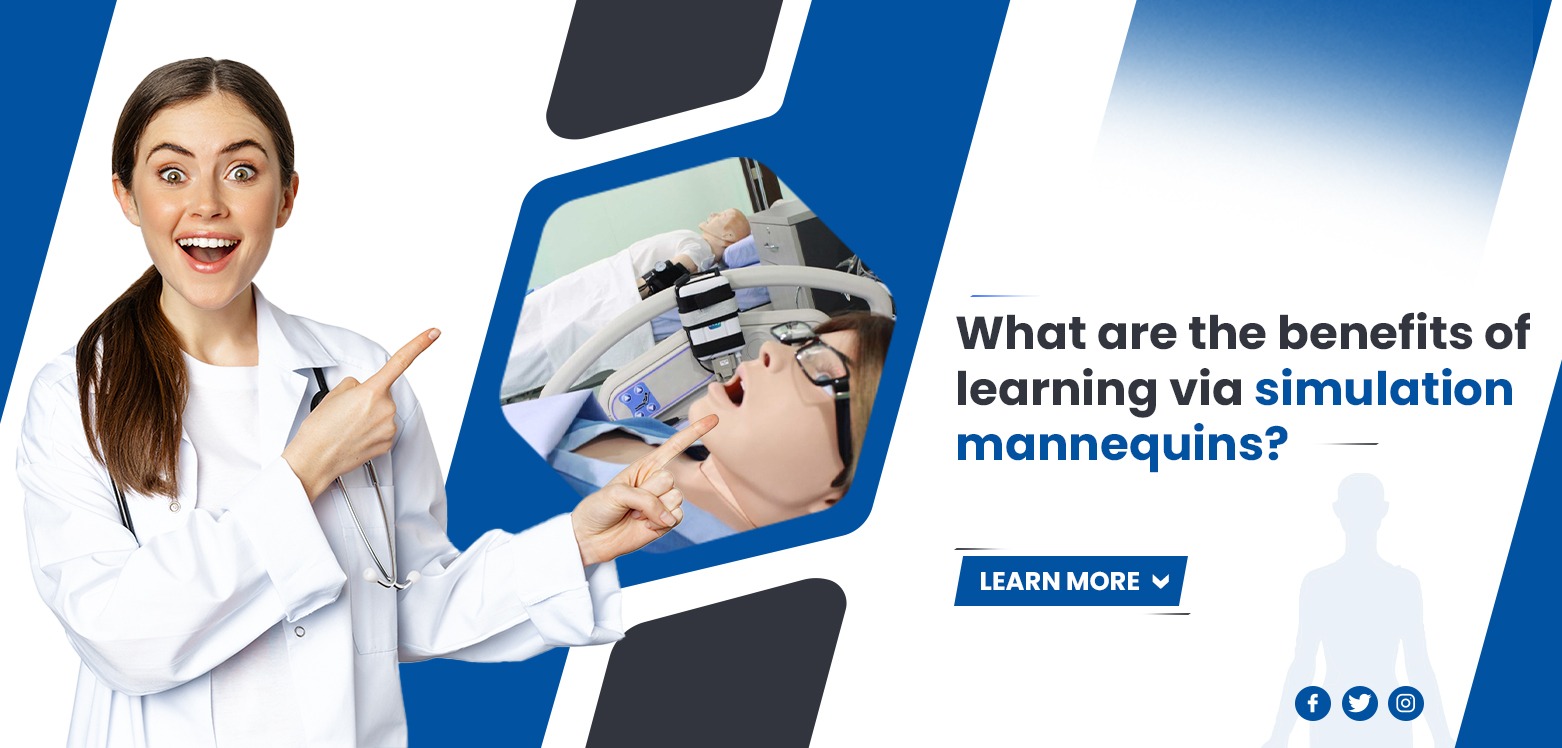
What are the benefits of learning via simulation mannequins?
Simulation mannequin
A simulation mannequin, also known as a patient simulator or medical mannequin, is a lifelike anatomical model used in medical and healthcare training. It is designed to replicate human anatomy and physiological responses to simulate various clinical scenarios. These mannequins are equipped with advanced features such as realistic airway and breathing mechanisms, pulse simulation, responsive vital signs, and even interactive capabilities. They can be programmed to mimic specific medical conditions, emergencies, or procedures, allowing learners to practice clinical skills, decision-making, and teamwork in a controlled and realistic environment. Simulation mannequins provide a valuable tool for hands-on training, skill development, and assessment in healthcare education.
Benefits
Learning via simulation mannequins offers several benefits. Here are some of the key advantages:
1. Realistic training environment: Simulation mannequins provide a realistic training environment that closely resembles real-life scenarios. They replicate human anatomy, physiology, and responses, allowing learners to practice and develop their skills in a safe and controlled setting.
2. Hands-on practice: Simulation mannequins allow learners to engage in hands-on practice, which is crucial for skill development. Learners can perform various procedures, such as CPR, intubation, and patient assessments, on the mannequins, gaining valuable experience and building muscle memory.
3. Mistake-friendly learning: Simulation mannequins enable learners to make mistakes without risking patient harm. They provide a safe space for learners to experiment, learn from errors, and refine their techniques. This promotes a positive learning environment where learners can develop confidence and competence.
4. Team training: Simulation mannequins facilitate team training by allowing multiple healthcare professionals to work together in a simulated scenario. This promotes effective communication, coordination, and teamwork, which are essential elements in high-stress situations.
5. Replicating rare or critical scenarios: Simulation mannequins can replicate rare or critical scenarios that are infrequently encountered in real-life clinical practice. These scenarios may include medical emergencies, complicated surgical procedures, or specific patient conditions. By simulating these situations, learners can gain exposure and develop the necessary skills and confidence to handle such cases if they occur.
6. Ethical considerations: Certain procedures or interventions may raise ethical considerations or have potential risks when performed on real patients. Simulation mannequins provide a platform to train healthcare professionals on these interventions without subjecting patients to unnecessary risks or compromising ethical standards.
Overall, learning via simulation mannequins offers a safe, effective, and immersive training experience that enhances learners' skills, confidence, and preparedness to handle real-life situations.
Simulation mannequins Stations at DMSF
Davao Medical School Foundation (DMSF) stands as the pioneering medical college in the Philippines and the second in all of Asia to establish simulation mannequin stations. Recognising the effectiveness of learning through simulation, DMSF places a strong emphasis on incorporating this practice into its medical education. With a rich history since its establishment, DMSF has emerged as one of the premier medical schools in the Philippines, providing an outstanding medical education program that seamlessly integrates theoretical knowledge with extensive clinical training. Admissions are currently open at DMSF, offering aspiring students the opportunity to avail themselves of these exceptional benefits and pursue a high-quality medical education.
